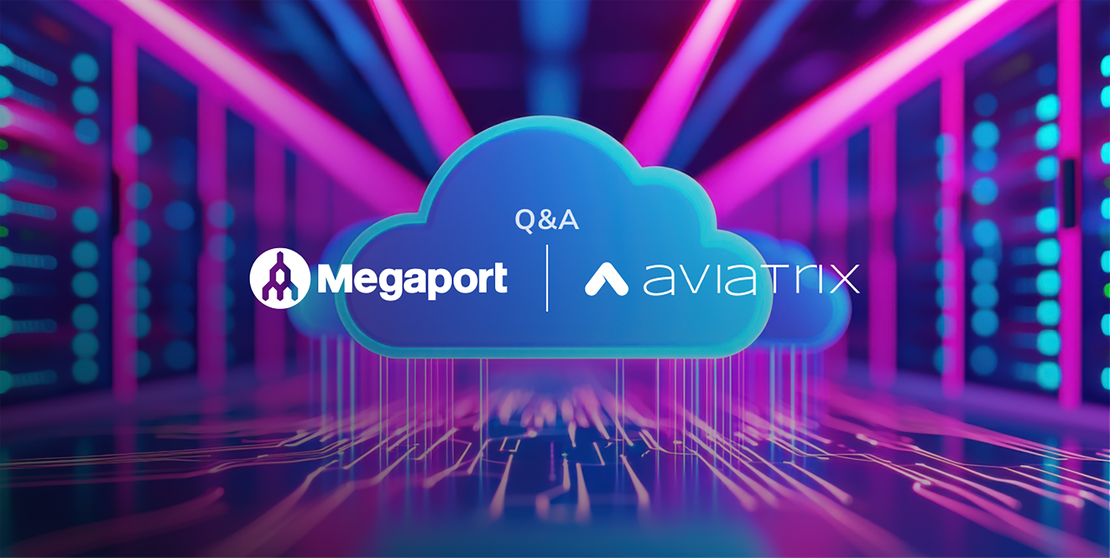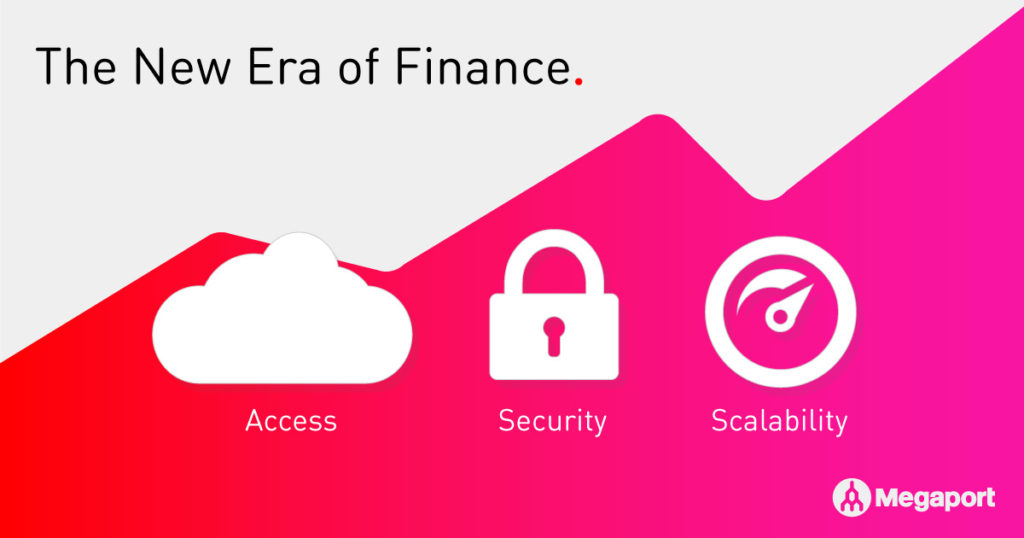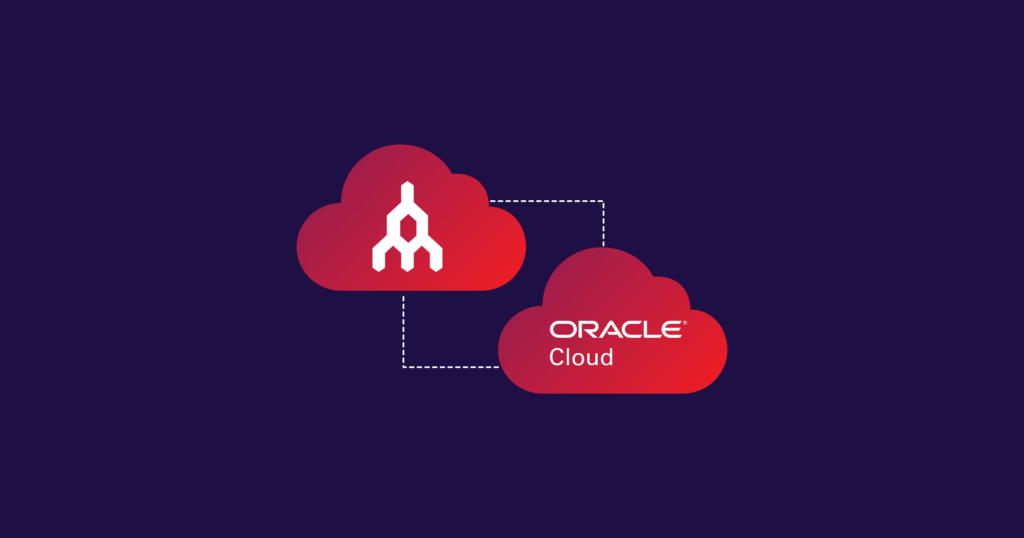
Your Questions Answered on Simplifying Hybrid and Multicloud Network Connectivity
By Chris Gunn, Solutions Architect
Dive into the highlights of our webinar Q&A with Aviatrix for expert guidance on how to streamline your network using Aviatrix and Megaport.
Co-authored by Tim McConnaughy, Technical Marketing Engineer, Aviatrix
In September 2024, we held a webinar with Aviatrix that had our team buzzing for weeks afterwards. Focused on how to simplify your hybrid and multicloud network connectivity, we received a wide range of great technical questions from the audience, and on reflection we thought – why not make this Q&A available to everyone?
Maybe you joined the webinar and want to follow up on the Q&A, or perhaps you didn’t and want to catch up on what you missed. Either way, in this blog we’ll answer your most frequently asked questions, diving deeper into the architecture, use cases, and integration benefits discussed during the event.
Q: Can my architecture be extended even further to the data centers, for example, also running Transits in Megaport and Edges in the data center?
Yes! With the Edge on Transit feature, coming soon from Aviatrix, Transit Gateway features will be supported on Edge Gateways in Megaport and on-prem data centers. This will ultimately allow the Aviatrix architecture to reach further into your data center environment.
Q: Is it possible to have a policy that specifies whether you want traffic to traverse a cloud provider’s backbone vs Megaport’s backbone?
Aviatrix uses BGP to peer with other networks. Using BGP AS-Path prepending, it is entirely possible to advertise both networks via different sources to Aviatrix and prefer one over another. Aviatrix will preserve the AS-Path and use it when making path decisions.
Q: Please speak to the advantage of Megaport for cloud-to-cloud transit compared to the current multicloud transit model. We currently peer between clouds without Megaport.
Megaport allows for private connectivity between clouds in a manner that’s simple, easy, and reliable for our customers. By leveraging private connectivity between clouds versus the internet, we’re able to guarantee a much better level of performance between cloud environments as well as take advantage of high-performance encryption without incurring high data egress fees.
Finally, Megaport can facilitate private connectivity across the world in a scalable manner for multicloud environments without hairpinning traffic through a specific cloud service provider.
Q: Is Megaport a network device?
No – Megaport is a networking service providing private connectivity across hundreds of data centers and cloud providers in a manner that’s reliable, fast, and easy. Megaport also supports the hosting of virtual networking devices from various vendors (such as Aviatrix for Secure Edge Gateway) to support your private network service with advanced networking and security features.
Q: Don’t we need to connect physical cables? How is the underlay connected with different CSPs?
Using Megaport’s Network as a Service (NaaS), all the underlying connectivity is already cabled up within Megaport’s network. The only time any physical cabling would be required is if you need a physical link to connect your own equipment directly to the Megaport network via a Port (up to 100G physical NNI).
Q: How is redundancy configured with DX connection and HA edge gateway? Do we need two different connections?
In terms of redundancy, the architecture can support multiple Edge Gateway MVEs or multiple cloud connections in physically diverse locations depending on your requirements. To meet higher cloud service provider SLAs, multiple connections to multiple physical locations should be provisioned.
Megaport allows you to provision multiple cloud connections to diverse on-ramps, terminating at multiple MVE endpoints located in unique data centers. This provides link redundancy to the cloud as well as physical redundancy from the customer’s side.
This is further facilitated via Layer 3 routing cost/preferences on the Aviatrix Edge Gateway, allowing for a preferred path between the cloud and data center.
Q: How do we get training materials for the Megaport platform?
Our Docs Portal is a great place to start learning about Megaport and its services. This portal goes much deeper into recommended deployment models and step-by-steps for how to provision Ports, CSP connections, and MCRs/MVEs.
Our Solution Architects also host weekly Tech Drop-Ins on Fridays, covering a different topic each week with a live Q&A.
Q: What conditions are required for Megaport to create a DX VIF in AWS?
To create a Direct Connect VIF, first you need to order the Direct Connect through Megaport as a cloud connection from an existing access service (Port, Megaport Cloud Router, or Megaport Virtual Edge). Once ordered in the Megaport Portal, it will appear in your Amazon Web Console for provisioning. Then, once provisioned, you should be able to create the VIF for the Direct Connect connection in AWS.
In our Docs Portal, we provide a step-by-step guide on how to create a Direct Connect connection between a Port and your AWS environment. Additional guides are also available for separate MVE vendors as well.
Q: Does Megaport have any VM/hardware to deploy the Aviatrix Edge gateway?
Megaport hosts Aviatrix Secure Edge VMs on Megaport Virtual Edge (MVE), an on-demand Network Function Virtualization (NFV) service, in over 25 metros around the world. It’s all done directly via the Megaport portal in a matter of minutes, and can be deployed automatically via APIs as well. A full list of MVE-enabled locations can be found here.
Q: Can you extend the Aviatrix overlay into private data centers by placing Edge instances there as well, for example, extending HCE and failover end-to-end across private and public/internet, visibility, etc?
You can absolutely extend your cloud network into a private data center by placing an Edge appliance there. This allows you to manage the Edge the same way as your cloud deployment to benefit from automation and observability, as well as the ability to troubleshoot both ends of the hybrid cloud connection with visibility on application traffic and the data plane.
Q: What are the benefits of using this architecture with an MVE rather than just a VXC to on-ramp into the cloud? We currently utilize VXCs and peer directly with an AWS VGW, then VGW peers with AVX Transit GW. Why would we want to change that design and utilize an MVE?
Utilizing MVE inside Megaport’s NaaS allows cloud-to-cloud routing to occur over private connectivity at the cloud edge without hairpinning that traffic back to an Aviatrix Edge Gateway at the private data center. This means cloud-to-cloud traffic takes a more direct path while also creating a middle-mile point in the for on-prem customer traffic to ingress into the Aviatrix cloud overlay network.
This also provides additional options for centralizing failover, segmentation, security policies, and monitoring closer to your cloud service providers.
Conclusion
By combining Aviatrix’s advanced cloud networking capabilities with Megaport’s secure, private underlay, businesses can achieve a consistent, high-performance network fabric across their cloud environments.
Whether you’re tackling complex hybrid deployments or optimizing your multicloud strategy, Aviatrix and Megaport provide the tools to streamline your network and future-proof your infrastructure.





